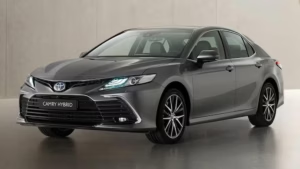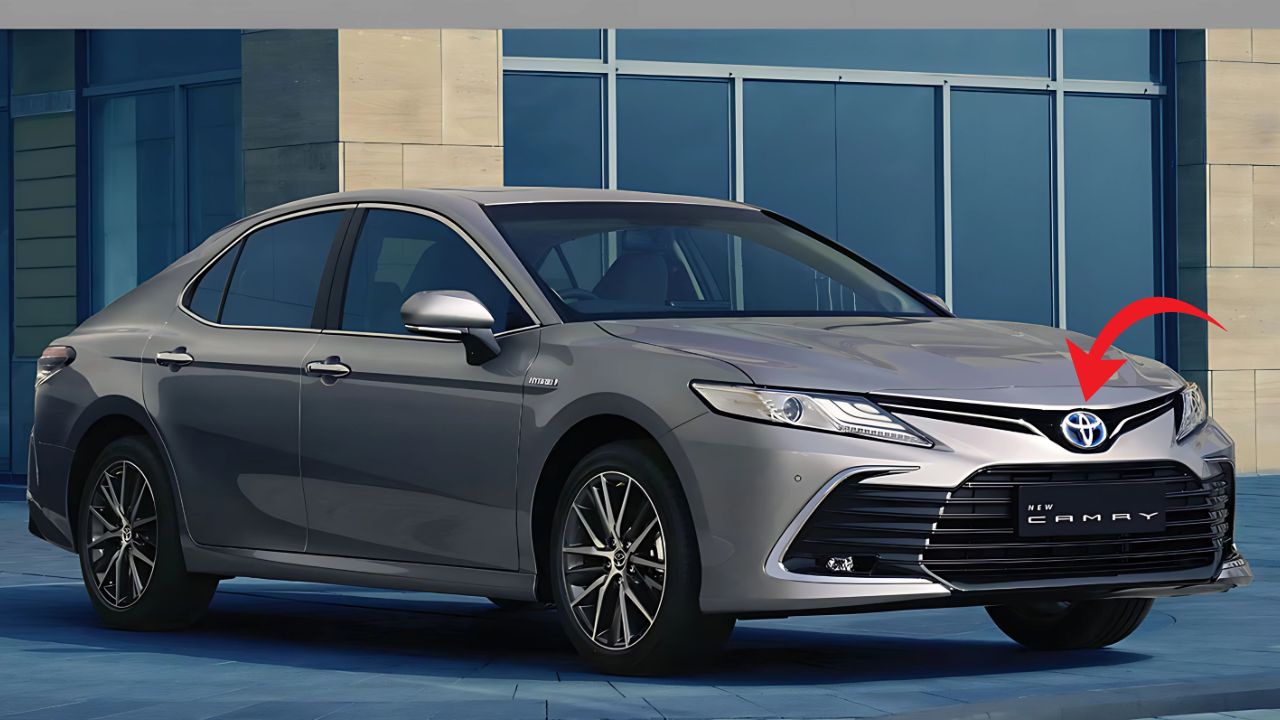The automotive landscape continues evolving at breakneck speed, and Toyota’s decision to make the 2025 Camry exclusively hybrid represents one of the most significant shifts in the sedan segment. This bold move signals Toyota’s unwavering commitment to sustainable mobility while maintaining the reliability and performance that made the Camry Australia’s beloved family sedan.
After decades of offering traditional petrol engines alongside hybrid options, Toyota has taken the plunge with their latest Camry generation. The decision reflects changing consumer preferences, stricter emissions regulations, and Toyota’s expertise in hybrid technology development spanning over two decades.
Launch Timeline and Market Strategy
Australian motorists won’t have to wait much longer to experience this hybrid revolution. Toyota has confirmed the new-generation Camry will reach local showrooms during the second half of 2024. This timeline positions Toyota strategically ahead of several competitors who are still transitioning their sedan lineups toward electrification.
The timing couldn’t be more perfect. With fuel prices remaining volatile and environmental consciousness reaching unprecedented levels, Australian families are increasingly seeking vehicles that deliver both economic and ecological benefits. Toyota’s decision to eliminate traditional petrol engines entirely demonstrates their confidence in hybrid technology’s maturity and consumer acceptance.
Industry insiders suggest this launch strategy reflects Toyota’s broader global vision. By standardizing hybrid powertrains across their sedan range, the manufacturer can achieve greater production efficiencies while advancing their carbon neutrality goals. This approach also simplifies the purchasing decision for consumers who previously faced complex choices between multiple engine options.
Revolutionary Powertrain Technology
Fifth-Generation Hybrid Innovation
The heart of the 2025 Camry beats with Toyota’s most advanced hybrid system to date. The fifth-generation Toyota Hybrid System represents years of engineering refinement, building upon the success of previous iterations that have powered millions of vehicles worldwide.
Central to this system is a naturally aspirated 2.5-litre four-cylinder engine that works seamlessly with electric motors. This configuration has been meticulously tuned to deliver optimal balance between performance and efficiency. Unlike many competitors who view hybrid technology as a compromise, Toyota has engineered this system to enhance the driving experience rather than diminish it.
Performance Meets Efficiency
The beauty of Toyota’s latest hybrid system lies in its intelligent power distribution. During city driving, the electric motors can handle low-speed acceleration independently, providing whisper-quiet operation and zero local emissions. When additional power is required, the petrol engine seamlessly engages, delivering responsive acceleration that rivals traditional engines.

This sophisticated power management extends battery life while maximizing fuel efficiency. The system continuously monitors driving conditions, battery charge levels, and power demands to determine the optimal combination of electric and petrol power. Advanced regenerative braking captures energy typically lost during deceleration, feeding it back into the battery system.
Early testing suggests the new hybrid system delivers significantly improved fuel economy compared to previous Camry generations. While official consumption figures await final testing, industry experts anticipate remarkable efficiency gains that will translate into substantial savings at the fuel pump.
Design Evolution: The Hammerhead Aesthetic
Exterior Transformation
Toyota’s designers have embraced bold new directions with the 2025 Camry’s exterior styling. The adoption of Toyota’s “Hammerhead” design language creates a more aggressive, contemporary appearance that challenges traditional sedan conventions.
The most striking feature is undoubtedly the C-shaped headlight configuration. These distinctive lighting elements create a unique visual signature while improving illumination performance. The integration of LED technology ensures excellent visibility while adding to the vehicle’s premium appearance.
The front fascia receives comprehensive updates that complement the new lighting design. A more prominent grille design emphasizes the hybrid powertrain’s efficiency while maintaining Toyota’s family resemblance. Careful attention to aerodynamic details helps reduce wind resistance, contributing to improved fuel economy.
Rear End Refinement
The rear design receives equal attention with revised taillight clusters and bumper treatments. These changes create better visual balance while incorporating practical improvements like enhanced visibility and easier access to the trunk. The overall effect is a more cohesive design that appears both sporty and sophisticated.
Interior Comfort and Technology
Step inside the 2025 Camry, and the improvements become immediately apparent. Toyota has invested heavily in creating a more premium cabin experience that rivals luxury competitors. Material quality receives significant upgrades with soft-touch surfaces replacing hard plastics in key contact areas.
The dashboard layout prioritizes driver convenience with intuitive control placement and improved ergonomics. Climate controls remain easily accessible while driving, and storage solutions have been optimized for modern lifestyle needs including smartphone accommodation and charging solutions.
Advanced Infotainment and Connectivity
Wireless Integration
Perhaps no feature reflects modern expectations better than wireless smartphone connectivity. The 2025 Camry’s new infotainment system supports both wireless Apple CarPlay and Android Auto, eliminating the need for cables while maintaining full functionality.
This wireless capability extends to device charging with strategically placed wireless charging pads that accommodate various smartphone sizes. The system maintains connection stability even during demanding driving conditions, ensuring uninterrupted access to navigation, music, and communication features.
User Interface Improvements
The infotainment screen receives substantial upgrades in both size and functionality. Response times improve dramatically compared to previous generations, making menu navigation more intuitive and enjoyable. Voice recognition capabilities expand to handle more complex commands, reducing driver distraction.
Toyota has also improved the system’s learning capabilities. The infotainment can remember frequently used destinations, preferred audio settings, and commonly accessed features. This personalization makes each journey more convenient while reducing setup time.
Enhanced Safety Technologies
Safety remains paramount in Toyota’s design philosophy, and the 2025 Camry benefits from the latest Toyota Safety Sense suite. These systems work proactively to prevent accidents while providing confidence-inspiring protection when incidents occur.
Pre-collision systems receive enhanced detection capabilities, including improved pedestrian and cyclist recognition. The adaptive cruise control operates more smoothly in stop-and-go traffic, reducing driver fatigue during commutes. Lane-keeping assistance becomes less intrusive while maintaining effectiveness.
Emergency braking systems now respond to a broader range of scenarios, including intersection situations that previously challenged detection systems. These improvements reflect Toyota’s commitment to achieving their ultimate goal of zero traffic fatalities.
Pricing Strategy and Market Positioning
Value Proposition
Toyota’s pricing strategy for the hybrid-only Camry demonstrates their commitment to making advanced technology accessible. The expected starting price of $39,990 for the Ascent variant positions the Camry competitively against traditional petrol sedans while offering superior technology and efficiency.
This pricing reflects Toyota’s economies of scale in hybrid production. By leveraging their extensive hybrid manufacturing experience, Toyota can offer advanced technology at prices previously associated with conventional powertrains. The value proposition becomes even more compelling when considering long-term fuel savings and potential government incentives for efficient vehicles.
Variant Strategy
While specific variant details await official announcement, Toyota’s traditional approach suggests multiple trim levels will cater to diverse buyer preferences. Higher trim levels will likely feature premium materials, advanced safety features, and enhanced comfort amenities while maintaining the core hybrid efficiency benefits.
Market Impact and Future Implications
The 2025 Camry’s hybrid-only approach signals broader industry trends toward electrification. Toyota’s decision provides valuable insight into consumer readiness for alternative powertrains and the viability of hybrid technology as a mainstream solution.
This shift challenges competitors to accelerate their own electrification strategies while demonstrating that efficiency doesn’t require compromise in comfort, performance, or practicality. The Camry’s success will likely influence future model strategies across the automotive industry.
Frequently Asked Questions
Will the 2025 Camry be more expensive to maintain than previous models?
Toyota’s hybrid systems have demonstrated exceptional reliability over decades of production. Maintenance costs typically remain comparable to conventional vehicles, with some components like brake pads lasting longer due to regenerative braking. Toyota’s extensive service network ensures qualified technicians and parts availability nationwide.
How does the hybrid system perform in different driving conditions?
The fifth-generation hybrid system adapts seamlessly to various driving scenarios. City driving maximizes electric motor usage for efficiency, while highway driving optimizes the petrol engine for sustained performance. The system automatically adjusts power distribution based on demand, terrain, and driving style without driver intervention.
What happens if the hybrid battery fails after warranty expiration?
Toyota provides comprehensive warranty coverage for hybrid components, typically extending beyond standard vehicle warranties. Even after warranty expiration, replacement costs have decreased significantly as technology matures. Additionally, many hybrid batteries can be refurbished rather than completely replaced, offering cost-effective solutions for older vehicles.
